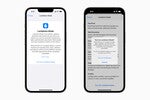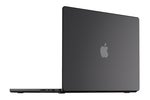What is Stolen Device Protection for iPhone and how does it work?

Take that, iPhone thieves — Apple is about to make it even more difficult to use its smartphones when you have no right to do so. In the upcoming iOS 17.3, it is testing out a new security system called “Stolen Device Protection.”
Here’s a look at what this is, and what it does.
Stolen Device Protection explained
Apple’s beta notes explain: “Stolen Device Protection adds an additional layer of security in the unlikely case that someone has stolen your iPhone and also obtained your passcode.”
The company explains the features this way:
- Accessing your saved passwords requires Face/Touch ID to be sure it’s you.
- Changing sensitive settings like your Apple ID password is protected by a security delay.
- No delay is required when iPhone is at familiar locations such as home and work.
The idea is that Stolen Device Protection introduces another obstacle that makes it difficult for thieves to gain access to your data, erase it, or delete the device to factory fresh status for resale.







